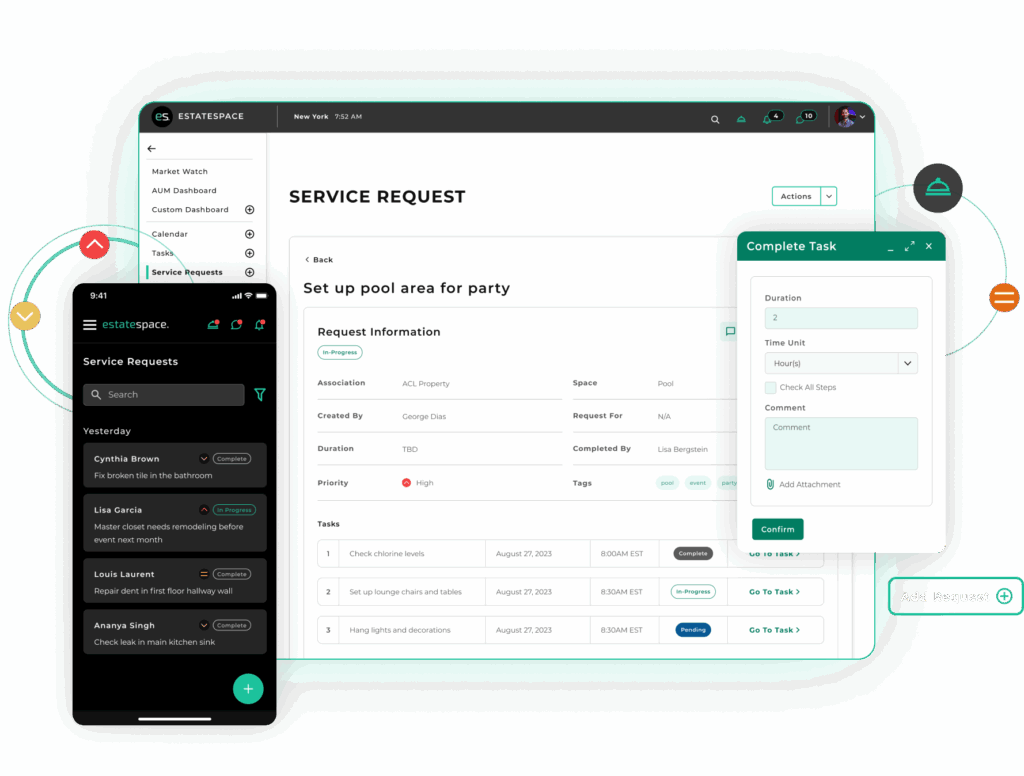Estate management software selection guide becomes critical as professionals navigate an increasingly complex technology landscape. Today’s estate managers and family office teams face overwhelming choices between point solutions, household-focused tools, and comprehensive platforms. However, understanding the fundamental differences between these options determines whether you achieve operational excellence or remain trapped in administrative complexity.
Modern estate operations demand sophisticated coordination across multiple domains, from asset tracking to client communication. Nevertheless, most available solutions address only fragments of these requirements, forcing professionals to cobble together multiple systems. Furthermore, the consequences of poor software selection extend beyond inefficiency to impact client satisfaction.
Understanding Estate Management Software Selection Guide Fundamentals
Current market offerings fall into distinct categories that serve different operational needs. Moreover, recognizing these distinctions helps professionals avoid costly implementation mistakes.
Studies show that professionals using fragmented systems spend significant time on coordination rather than strategic oversight. Consequently, the choice between comprehensive platforms and point solutions directly impacts your ability to deliver value-added services.
The Point Solution Problem: Why Fragmented Systems Fail
Many professionals begin their technology journey by addressing immediate pain points with specialized tools. Furthermore, task management applications and basic property software seem logical starting points for operational improvement.
However, point solutions create new problems while solving narrow ones. Each system requires separate training and unique data formats. Most importantly, information becomes siloed across platforms, eliminating the comprehensive oversight that sophisticated estate management requires.
Common Point Solution Categories:
- Task management tools for basic scheduling and assignments
- Property management software designed for rental operations
- Communication platforms lacking estate-specific context
- Basic inventory systems without asset lifecycle tracking
- Simple budgeting tools missing project integration
When your team manages information across multiple platforms, coordination becomes the primary challenge rather than service delivery. Moreover, clients receive fragmented experiences that undermine confidence in your operational sophistication.
Household Staff Solutions: Limited Scope for Professional Operations
Another category focuses primarily on household staff coordination and basic scheduling. Furthermore, while these platforms address important operational components, they lack the comprehensive asset management capabilities that professional estate management demands.
Household-focused solutions typically emphasize staff scheduling and simple task assignment. Additionally, they may include rudimentary inventory tracking suitable for basic supplies. However, they cannot accommodate the complex asset portfolios and financial reporting requirements that define professional operations.
The fundamental limitation lies in their design philosophy: they assume household management rather than asset stewardship as the primary function. Therefore, professionals using these platforms find themselves supplementing with additional tools for comprehensive oversight.
The Spreadsheet Trap: When Familiar Becomes Counterproductive
Despite technology advances, many estate professionals continue relying on spreadsheets for critical operations. Furthermore, spreadsheets offer familiarity that makes them seem like practical solutions for unique requirements.
However, spreadsheet-based operations create hidden costs that compound over time. Hidden costs destroying physical asset value demonstrate how manual systems lead to errors and coordination delays that characterize inefficient operations.
Additionally, spreadsheet operations cannot scale with portfolio growth. They require constant manual updates and lack real-time collaboration capabilities.

Purpose-Built Solutions: Built for the People Behind the Assets
EstateSpace represents a different approach: comprehensive platforms designed specifically for professional estate management by founders who experienced these challenges firsthand. Furthermore, our development process began from actual operational pain points rather than theoretical requirements.
The founding team spent years working 80-100 hours weekly managing physical assets using fragmented systems. Additionally, this experience revealed the true cost of inefficient operations: not just professional exhaustion, but missed family milestones and diminished quality of life.
This lived experience drives every feature decision and platform capability. Therefore, EstateSpace addresses real operational challenges with practical solutions that reduce administrative burden while enhancing service quality.
Comprehensive Platform Advantages:
- Unified data architecture eliminating information silos
- Integrated communication within operational context
- Complete asset lifecycle management capabilities
- Financial oversight with project integration
- Client portal access for transparency and collaboration
Evaluation Framework for Estate Management Software Selection Guide
Successful software selection requires systematic evaluation across multiple criteria that reflect your operational reality. Furthermore, different platforms excel in specific areas while creating gaps in others.
Start by documenting your current operational complexity: How many properties do you manage? What types of assets require tracking? Most importantly, what client expectations must your technology support?
Estate Management Software Selection Guide for Implementation Success
Technology adoption succeeds when it enhances rather than disrupts existing client relationships. Importantly, EstateSpace’s purpose-built design enables gradual implementation that improves operations without compromising service delivery.
The platform’s interface reduces training requirements while providing sophisticated capabilities that grow with your operational needs. Furthermore, comprehensive support ensures successful adoption regardless of your team’s technical background.
Most estate management teams see immediate operational improvements within 30 days, with full platform utilization typically achieved within 90 days.
Ready to evaluate how comprehensive estate management software can transform your operations? Discover more insights about selecting the right platform for your specific requirements and operational goals.
Summary: Estate management software selection guide helps professionals navigate complex technology choices by understanding the limitations of point solutions, household-focused tools, and spreadsheet operations while evaluating comprehensive platforms designed specifically for professional estate management requirements



